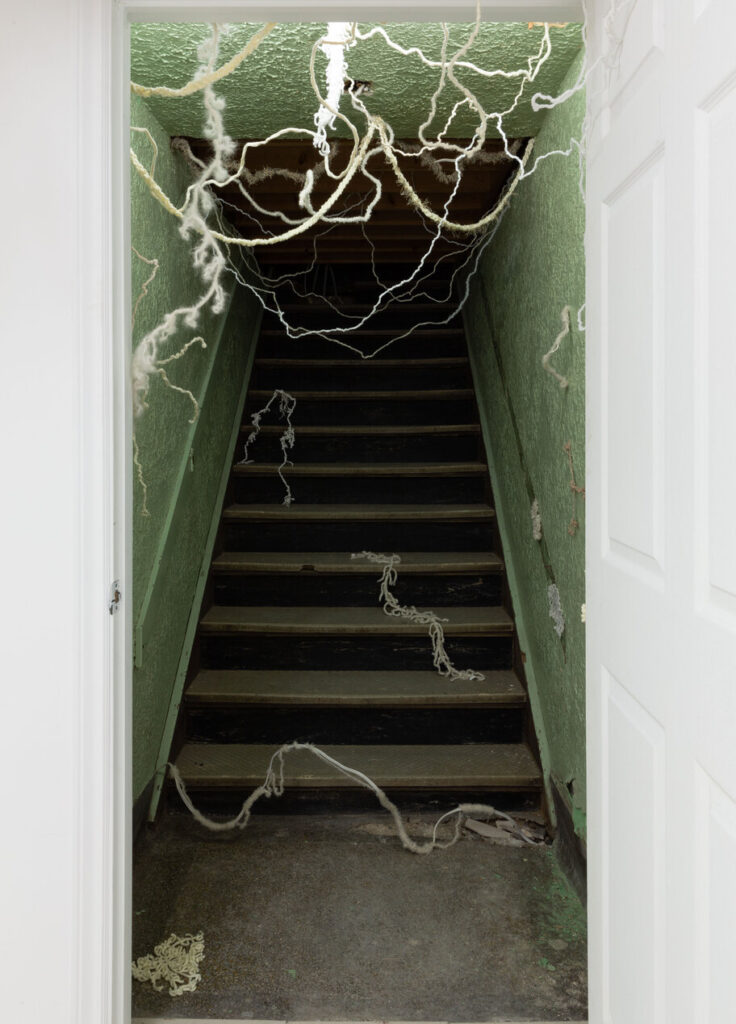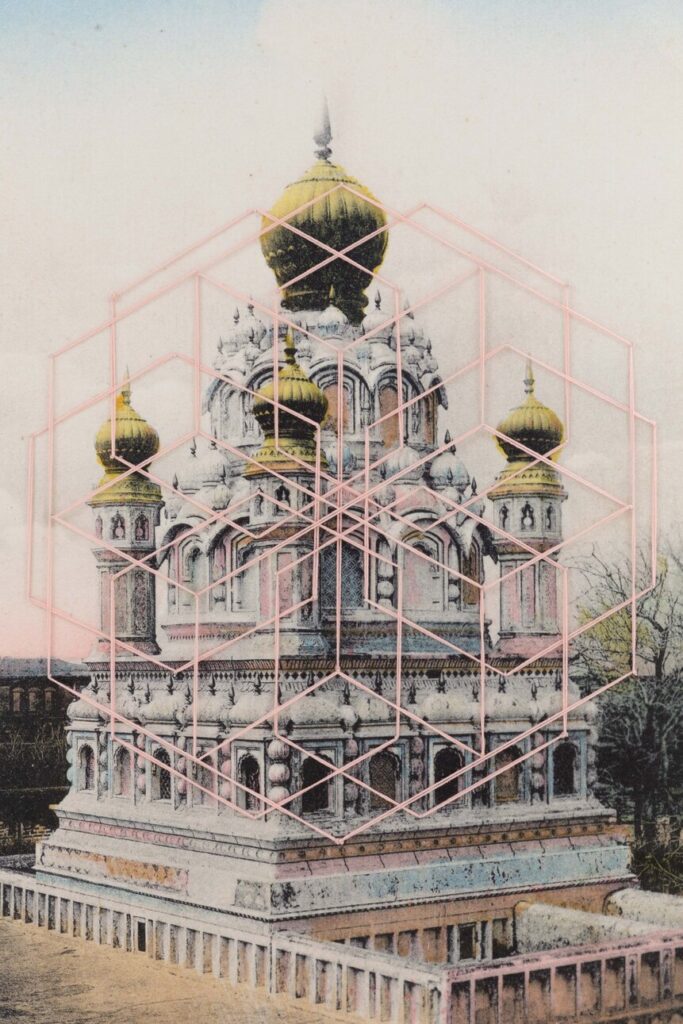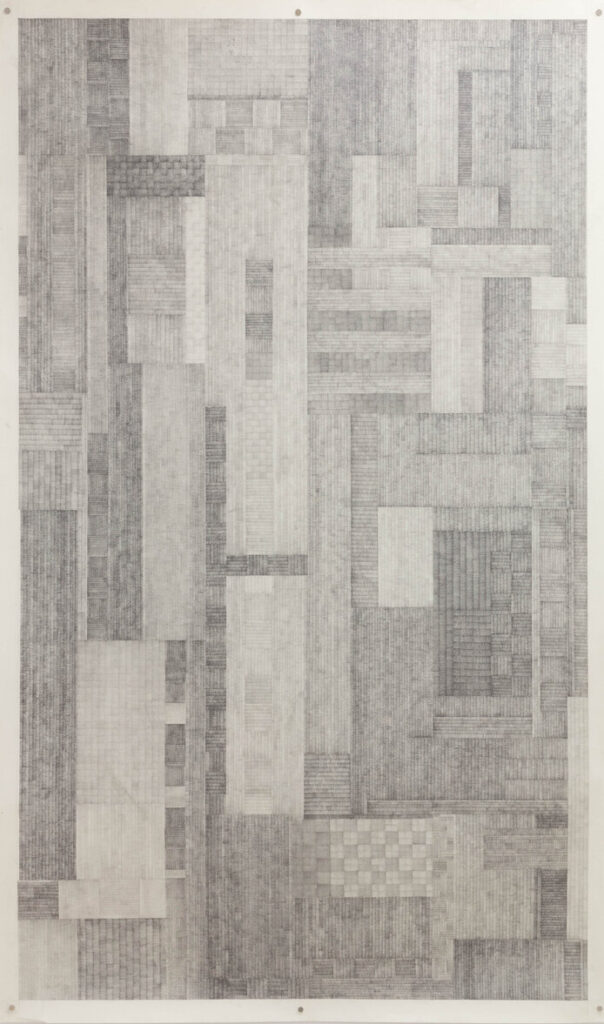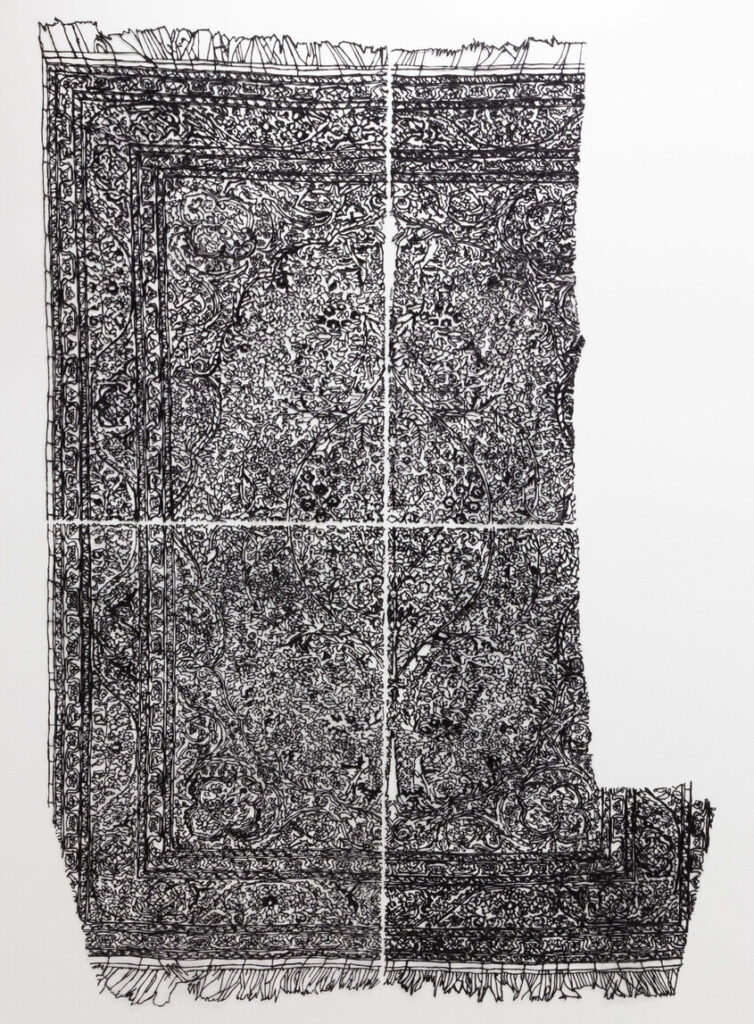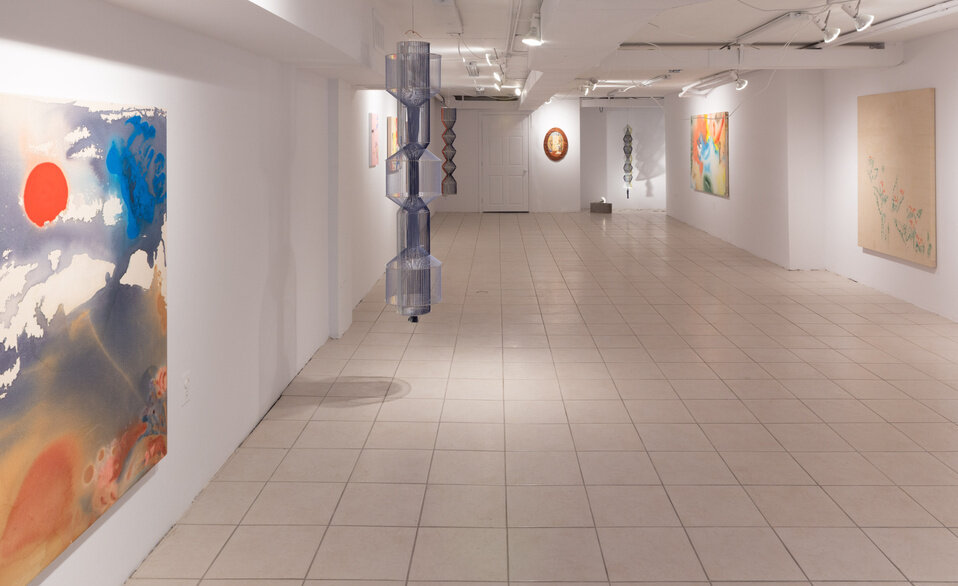If you want to know what art is emerging, you can do no better than to visit the Plumb Gallery. Mind you, its opening hours are limited to the weekends and it’s tricky to find. It is located in a basement whose entrance is in an alley of Dufferin Ave, on the east side just south St Clair Ave West. All told, this collective, who regularly curate shows of artists who submit their work by open invitation, is deservedly garnering attention. It’s a venue that is invariably brimming over with engaging art.
The gallery’s existence is testament to the sheer number of serious emerging artists to be found in the Toronto area, that is, artists who are highly trained, ambitious and disciplined. Currently on the menu are two separately curated group shows. One is titled Line Tracing, Shadow Chasing, curated by artist Amanda Boulos (one of the fifteen members of the collective), that features five artists: Mary Dyja, Leila Fatemi, Nicole Ji Soo Kim, Sukaina Kubba and Metha Oz. The other, titled House of Mirrors, is curated by Erin Storus, and features the works of two artists: Sophia Escobar and Brett Eduardz.
In her introductory remarks Boulos laments what she calls ‘the growing obsession with material goods’. She intones that making art is an antidote to this materialism. While the concerns of the five artists in the show are disparate, their work shares a certain aesthetic. Many of their pieces can be charitably construed as drawings, using a variety of materials. For instance, Kubba’s wall pieces are made from PLA – a biodegradable industrial plastic-like substance. Mary Dyja’s chosen material is discarded fabrics, which she has used to construct an installation inside a closed-off stairwell.
Mary Dyja, Installation with Viceral and Vine, 2023, recycled crochet yarn and wire, variable sizes
Overall the work might be described as prosaic, both in look and materially. In this way it is reminiscent of much of the artwork produced by the arte povera movement. The most colourful work is Fatemi’s temple-like construction, Common Thread, which features vintage postcards of religious buildings with geometrical designs stitched into them using coloured thread.
Leila Fatemi, Common Thread, 2019-ongoing, vintage postcards with embroidered details
My emotional response to the show was somewhat muted. While beauty can often be found in the unembellished, it seems to me that it is not the primary concern of most of these artists. Yes, much of the work is engaging on an intellectual level, but little of it excited me visually, sensuously. That is not to suggest that the works in this show are ugly. Rather, overall they are aesthetically underwhelming. But one thing I have learned is that beauty, by virtue of its senusuous basis, is generally regarded as anti-intellectual.
This prioritising of the conceptual over the sensuous is indicative of the materialist culture that Boulos, ironically, laments. Consumerism, as the grounds for materialism, thrives on turning cultural products into consumables. This is best achieved by making their production as easy as possible. The coup de grâce in this respect was Marcel Duchamp’s ready-mades, namely, the deployment of everyday products as artworks. Famously, he presented a signed urinal in an exhibition in New York. Later we had the example of Andy Warhol’s Brillo boxes. (In this show we have Oz’s band aids, for instance.) This banalisation, critic Arthur Danto has suggested, tells us that what qualifies as art is not determined by its intrinsic properties. Anything can be art, so long as it is sanctioned by the art establishment. The broadening of art to include almost any object leaves little room for judging artworks in aesthetic terms.
Metha Oz, Where are you From?, 2021, plexiglases, band-aid, ink (by self-inking toy stamps), 16.5 × 5 inches
This banalisation of art production naturally leads to the banalisation of artistic ideas. It has signalled a move away from a religious or spiritual attitude towards art-making, replaced by a set of more prosaic concerns. That is not to suggest that the subject matter of each one’s work is trivial. Ji Soo Kim’s work Hatching amid my own exhaustion, we are told for instance, concerns her working through her mourning the loss of two of her family members. My point is that current art practices lead to making art that lacks spiritual depth. Now of course, society as a whole tends to dismiss the very idea of the spiritual or the soul. Such talk is regarded as romantic claptrap. This attitude, however, simply reflects the materialism of which we speak.
Nicole Ji Soo Kim, Hatching amid my own exhaustion, 2022, mixed media, paper, Graphite, 3 x 5 ft.
There is nonetheless beauty to found in this show. Kubba’s piece La Brioche, for instance, has an understated visual impact.
Sukaina Kubba, La Brioche, CMC, 2023, hand-drawn with PLA filament, 44 x 66 inches.
Most of the artworks on display in Storus’s show, House of Mirrors, can be described as beautiful. Beauty, I aver, concerns that which is sensuously captivating, engaging. As an end in itself it leads to prettiness, a quality in nature that can be described as ‘look-at-me’, as with a flower. But in art it can also be a vehicle for expressing the spiritual – carrying us elsewhere. Eduardz’s abstract paintings are visually engaging. Some are reminiscent of the works of Vasily Kandinsky and Joan Miró. These works are very playful and deftly executed. That said, they tend towards stylistic pastiches insofar as he makes no effort to extend their practices. Storus suggests that underlying the work is a prefiguring of content by form, but I’m not sure what she means by this. Escobar has produced a series of eye-catching hanging scultpures made of thread. Artfully illuminated they cast ghostly shadows on the walls. They have a quiet presence that is calming.
Installation view of the House of Mirrors exhibition
Hugh Alcock
Images are curtesy of The Plumb Gallery
*Exhibition information: Line Tracing, Shadow Chasing and House of Mirrors, April 29 – May 28, 2023, The Plumb Gallery, 1655 Dufferin Street, Toronto. Gallery hours: Sat – Sun 2 – 5 pm.

